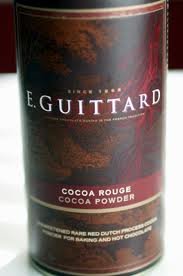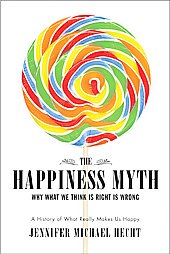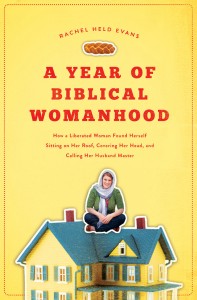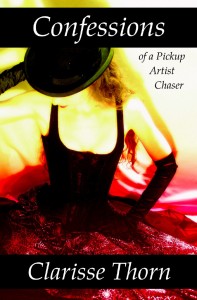In April of 2012, I published a blog post called “Revelation is Not Sealed.” In July 2012, I led a service at my UU Congregation that expanded on this post. Here is the sermon I gave in full:
As the years go by and my identity as a Unitarian Universalist solidifies, I feel my appreciation of my new tradition deepening all the time. At first I was drawn to a place where I could be spiritual with others who accepted me. And this congregation is a community where I can share common values, but also where disagreements do not mean fear of expulsion.
But something I have been thinking about recently is the UU doctrine that “Revelation is not sealed.” What this means is that while there might be some good lessons in the holy books of other religions, people can still learn truths about morality, human nature and the world in a multitude of ways. As Mark Christian, from the UU Church of Las Cruces said, “we must be open to new and higher truths.”
What this also means is that Unitarian Universalist Ministers are not limited to a single volume, written in the past during a different time and place to find the words to inspire and guide their congregations.
I think of the scene in the Johnny Cash biopic Walk The Line where Jack says
Look, J.R., if I’m going to be a preacher one day, I gotta know the bible front to back. I mean, you can’t help nobody if you can’t tell them the right story.
To a young boy of strong Christian faith, this makes perfect sense. But in my mind, his earnestness is immediately contrasted with Julia Sweeney’s remarks in her monologue Letting Go of God about the priests who have to live this reality of trying to tell people who need their help the right story. She says,
[L]ike a big ocean wave, the force of all that I hated about this Church welled up in me; all the pompous, numbing masses, the unabated monotony of the rituals, all the desperate priests trying to tease out something meaningful from a very flawed ancient text.
I first thought about this problem after a Sunday service here about Leymah Gbowee, winner of the Nobel Peace Prize for her activism in stopping the Second Liberian Civil War.
I wondered how a Catholic priest could talk about Leymah Gbowee if he wanted to. There was a priest in the parish my family belonged to when I was in high school, who loved to talk about “the power of prayer.” Sometimes he quoted guests on Larry King Live or something he read in Reader’s Digest to make his point. But, as a Catholic priest, he was limited in when and how he could broach this subject – or any subject. The Catholic Church has selected Bible readings for every Sunday of the year – This lectionary is the same all over the world – on a three year cycle. So any priest only really needs three years worth of homilies for his entire life. If he wants to write more than that he can – but the readings never change. Unlike Jack, who was a protestant, Catholic priests do not even have the entire Bible at their disposal to refer to during Mass.
Current events did come up in homilies on occasion. The Catholic chaplain at my university campus often spent Sundays relating that week’s gospel to the unjustness of the Iraq War. And I will always remember the Christmas Eve Mass I attended in 2001, where the priest spoke of the Olympic Torch in Rockefeller Center, on its way to Salt Lake City, as a light of hope – we should see it as symbolic of the light of Christ – and a symbol that we would heal from the horrors of September 11. Several members of our community had been killed in the attack, and many people were comforted by his words. But they were his own words, and had little to do with the story of the Nativity he had just read.
That homily was not the norm. Most of the homilies I heard as a Catholic were much more generic. I understand perfectly what Sweeney is talking about when she refers to the “desperate priests trying to tease out something meaningful from a very flawed ancient text.”
When a priest wants to speak about an issue facing his community he faces several hurdles. First, how to relate that issue to the week’s Bible passages prescribed by the Vatican. Second, there is the possibility that the topic he wants to explore is not relatable to any of that years readings or the entire three year cycle of readings at all. Aside from a few Christmas and Easter services, I cannot remember which Gospel readings went with any of the Catholic homilies that have stayed with me through the years. The purpose of the homily is for the priest to relate the message of that week’s Bible passages to the community. But the two types of homilies I remember hearing most often were either interpretations which were exceedingly vague platitudes about being a good and forgiving person, or insightful discussions which only tangentially relate to that week’s Bible reading. It was very rare that a homily was both inspiring and clearly related to the text.
Unitarian Universalist ministers do not have this problem. I have heard UU ministers read from the Bible, or from another holy book. But more often than not they read a passage of poetry, prose, philosophy, or history that speaks to them. Sometimes these readings are written by other UU’s – and sometimes they aren’t. Sometimes a reading during a UU service is not a piece of text, but music or a work of art. In this way, a congregation can address its needs, and is not frozen in time. When we believe that revelation is not sealed, we are open to learning about the world and about ourselves from every source around us. In not limiting ourselves, we can continue to grow unrestrained, and search for truth.
And the search for truth is not an easy task. As some of you may know, my husband and I both write internet blogs. Recently, anyone who reads or writes about religion online was shocked when a well known atheist blogger, Leah Libresco announced her conversion to Catholicism. As I turned her words over in my head, I found myself with a lot of questions. What would be the ideal Unitarian Universalist response to this news? Leah seemed so joyful! Was I wrong to leave the Catholic Church? But her reasoning really didn’t make any sense to me. Should I reconsider my rejection of atheism? What is Unitarian Universalism, and am I doing it right? Could I be doing it wrong? Are there some truths I will never understand?
I felt like a cat chasing a laser pointer.
But all of this thinking and questioning lead to more reading and thinking and writing and questioning. And I felt comforted that unlike both the metaphorical cat and laser pointer I’d probably be able to figure something out, and unlike Leah, I had more than just the Bible to guide me.
One thing that I have found, while reading about Unitarian Universalism, is that some of us are fond of making jokes about our denomination. One of them seems particularly relevant here:
Each religion has its own Holy Books:
Judaism has the Torah,
Islam has the Koran,
Christianity has the Bible,
and Unitarian Universalism has Roberts’ Rules of Order.
Like most UU jokes, this pokes fun at our argumentativeness and our sometimes painful earnestness. But I like the truth hidden within this joke. Roberts Rules are used to moderate discussion and bring order and equity to a heated or chaotic argument. I like the idea of using guidelines for respectful discourse as a sacred text.
This joke gets at the heart of our belief that revelation is not sealed. It says that instead of an established holy book, what we revere is a process, a journey to discover what is true and to grow spiritually.
That revelation is not sealed is a truly radical and unique idea among the world’s faiths. It is anathema to almost every other religion.
The ancient Greeks told the story of Pandora, the first woman. She is given a gift by the gods, and told not to open it. Out of sheer inquisitiveness, she does. She is human after all. And she unintentionally releases evil into the world.
Similarly, in Abrahamic traditions, Eve is told not to eat from the tree of knowledge of good and evil, but she does so anyway – the Devil himself igniting her curiosity. And this is the cause for humans expulsion from paradise, pain in childbirth, toil in farming, and original sin that will stain the souls of every person born thereafter – wanting to discover the truth.
Entire books could be, and have been, written about Pandora and Eve and how they have been used to demonize women specifically, but today, I am more interested in what these stories tell us about other traditions attitudes towards the quest for knowledge. The message is made explicitly clear by the Book of Proverbs, chapter 3, verse 5. It is written,
Trust in the LORD with all your heart and lean not on your own understanding.
My own understanding, the power I have to learn and understand new things is a source of great joy in my life, and has been at times a spiritual experience. I remember feeling a deep sense of reverence in my high school biology class when I learned for the first time how cells replicate their DNA. Cells multiply for any number of reasons, when a new animal or person is gestating inside an egg or their mother’s womb, to repair injuries or to replace older, dying cells, the process is called mitosis. And in part of this process, a complete copy of the entire DNA of the individual organism must be made for the new cell. Specialized enzymes “unzip” the DNA, copy it, and create two separate but identical double helixes. When I finally grasped the concept, I felt like I was looking into a treasure box, that some precious secret had been revealed. My own understanding made me feel close to God.
The opposite idea, that revelation has been sealed, has stunted humanity’s growth in countless ways both spiritual and material. Limits on the creation of “graven images” slowed the development of artistic techniques. Prohibitions of dissection impeded the progress of biology and life saving medicine. Today, Biblical literalists would curtail the rights of women and LGBT people throughout the world – all because of the command to lean not on our own understanding, but instead to trust that all we need to know is contained within a single volume.
By contrast, in Unitarian Universalism, we have the freedom to cherish these texts as holy if we choose, but we are also free to follow our conscience if they are teaching something that is not right. This is an awesome freedom, as the possibilities are endless, so it should be treated with respect.
As UU’s we have real power to use what we learn not only in our day to day lives, but in our congregations and in our denomination. Unlike those of other faiths bound by unchanging texts in a constantly changing world, we can change our ways in response to new understandings, and we have come to believe that there are times when we MUST change.
This is why UU’s were involved in the Civil Rights Movement, in the Feminist Movement, and why we were among the first denominations to marry same sex couples in the United States. This is why UU’s from across the country have protested Arizona’s unjust and dehumanizing immigration law. This is why we undertake extensive projects to learn how to unlearn all we have absorbed from our toxic culture of bigotry and hatred. Our ability to learn from past mistakes is what has inspired our campaign to stand on the side of love.
I am proud to be a Unitarian Universalist. And I am inspired by the idea that the universe contains truths that I have yet to learn. When we say that we believe that revelation is not sealed, we are saying that we are open to spiritual growth. When we say that we believe revelation is not sealed, we are saying that we know that we could be holding ideas that are wrong, and that we are open to changing them. When we say that we believe that revelation is not sealed, we are saying that we accept the awesome responsibility of our search for truth.







